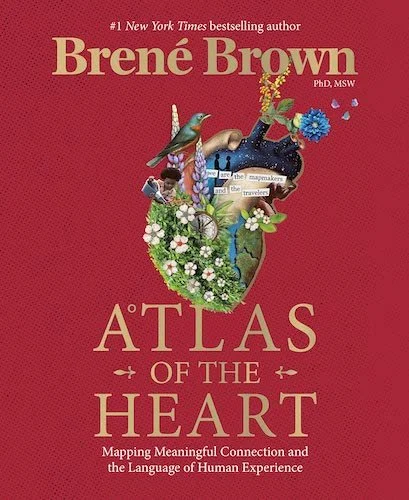Atlas of the Heart
There’s a lot happening beneath the surface of a good story. Likewise, there’s a lot that goes on beneath the surface of our lives.
If someone (me) can go half a lifetime without naming the eye condition that literally changes how they (I) see the world, just imagine all the other parts of ourselves—mysterious but no less consequential—that are never acknowledged, let alone named.
Like emotions.
Fifteen years ago, the researcher Brené Brown and her team began asking people to list “all of the emotions that they could recognize and name as they were experiencing them.” Seven thousand surveys later, the average number of emotions respondents managed to name was three: happy, sad, and angry.
In her new book, Atlas of the Heart: Mapping Meaningful Connection and the Language of Human Experience (Random House), Brown has set out to expand our emotional vocabulary. After her engaging and personal introduction, it took me by surprise that subsequent chapters have more of a dictionary feel. This is a well-designed book with evocative photos and full-page quotes, as well as numerous first-person anecdotes and research findings. But mainly we get a lot of definitions of emotions and emotion-adjacent words.
Which isn’t entirely a bad thing. I mean, do most of us honestly understand the difference between wonder and awe? Between irony and sarcasm? Or what about hubris? How is that different from pride?
As much as I love words and get joy from using them (or seeing them used) well, some words are easier to find than others. That’s why I’m grateful for this book and for Brené Brown’s mission to give us a more robust vocabulary, especially pertaining to matters of the heart.
